Borobudur
Wednesday, 27th May 2009 by Evan Brammer
Sitting between twin volcanoes in "the garden of Java" - the Kedu Plain of Indonesia - is a ninth century Buddhist temple: Borobudur. One huge stupa (shrine for the Lord Buddha), it also contains seventy-two smaller, bell-shaped stupas; each pierced with many decorative holes that make the bells to resemble cages.
Inside each of the smaller, cage-like stupas sits a statue of Buddha, but in total there are actually 504 statues of Buddha here.
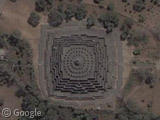
Borobudur (Ground-level photo)
The temple, known as a candi (chan-dee) in Javanese, was re-discovered in 1814 when then-British ruler, Sir Thomas Raffles, was advised by locals as to its presence. It laid hidden for many years, covered in jungle growth and volcanic ash. Raffles ordered a restoration that would last through the next 170 years.
Early in the 1900's, during one of the renovation periods, two smaller candis built using the same style were found to Borobudur's northeast:
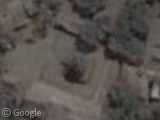
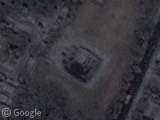
Candi Pawon (Ground-level photo), and Candi Mendut (Ground-level photo)
All told, the three candis sit about two and half miles apart: from Borobudur to Mendut, with Pawon sitting in the middle. What is most interesting though, is that all three are arranged in a perfect line. Pretty impressive given that this was done without the power of Google Earth - 1100 years ago!
Today Borobudur is the number one tourist destination in Indonesia, receiving several million visitors each year.
There are loads of cool-looking HDR photos available over at Stuck in Customs, and of course Wikipedia has more information as ever.
See also our previous coverage on Angkor Wat, a similarly styled Buddhist temple in Cambodia.


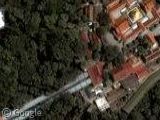
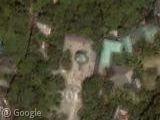
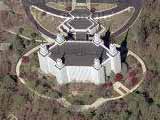
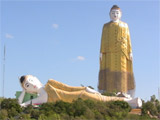
Evil pedanticism requires me to point out that “all three are arranged in a perfect line” is a bit over the top 😛
If less than three were in a straight line, they wouldn’t be in any sort of line 🙂
…and presumably, if you can see one from the other, then getting them all lined up isn’t that difficult….
Check out the imagery and you’ll see that the distance from the first to the second is well over a mile. The distance from the first to the third is well over two. It’s possible (because they did it), but I’m sure it wasn’t exactly easy.
If you DO want to get pedantic Kirkburn, obviously ANY two would be on a line … as a line is an ‘ infinitely long straight object with negligible width and height’ ,,, and there is sure to be one of thos running through any two points.
Hello, We are Master students of National Taiwan University of Science and Technology. We are doing a research about Heritage in Yogyakarta, center of Java. We choose Borobudur and Prambanan to survey how heritage impacted or merged in tourism sites in Indonesia. And we really need your opinions about those two heritages so we could try our best to improve the tourism in heritage sites. Thank you for your help!! Thank you very much!!! My e-mail: [email protected]
The Questionnaire address: http://www.smart-survey.co.uk/v.asp?i=14289fwmcp
Best regard.
All of Students of Graduate Institute of Architecture and Historic Preservation.
good google eart is the best,